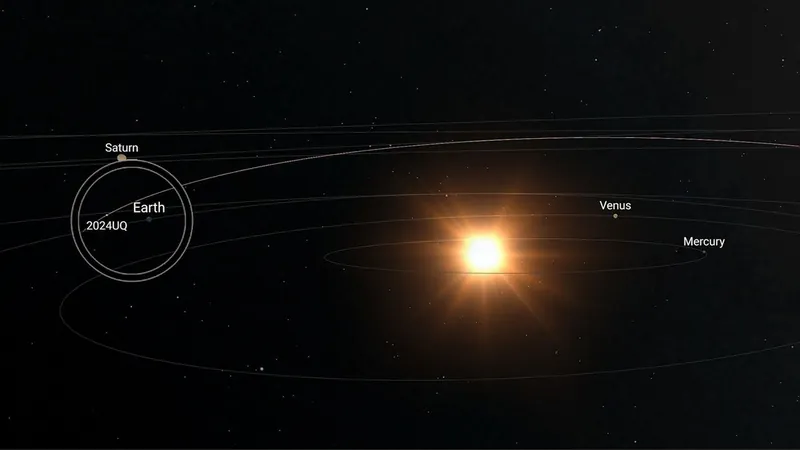
A Surprise Asteroid Impact: Earth Hit Just Hours After Detection – Is This the New Normal?
2024-11-08
Author: Li
A Paradigm Shift in Planetary Defense
In a stunning turn of events last month, an asteroid crashed into Earth mere hours after being discovered, raising serious questions about the effectiveness of current monitoring systems. This asteroid, whimsically designated 2024 UQ, was only about 3 feet (1 meter) wide and harmlessly disintegrated over the Pacific Ocean off California's coast. Nonetheless, its rapid approach threw a spotlight on the vulnerabilities in our planetary defense strategies.
Detection and Tracking Challenges
The asteroid was initially detected on October 22 by the Asteroid Terrestrial-impact Last Alert System (ATLAS) based in Hawaii, a network famed for spotting celestial objects that could endanger Earth. Just two hours after its detection, 2024 UQ went up in a fiery blast, effectively classified as an "imminent impactor." Experts from the European Space Agency's Near-Earth Object Coordination Center (NEOCC) lamented that they received critical tracking data only after the impact had already occurred, illustrating a significant gap in real-time detection efforts.
Delayed Alerts
The alert from ATLAS came too late, as ESA revealed in its November newsletter: “The small object's position was located at the edges of two observational fields, causing a delay in its identification as a hazardous object.” By the time astrometry reached monitoring systems, the asteroid had already met its fiery fate.
Captured Moments
However, not all news was bleak. Bright flashes from 2024 UQ's fiery entry were captured by NOAA’s GOES weather satellites and the Catalina Sky Survey, confirming the asteroid's trajectory and impact event. It’s noted that this asteroid was the third "imminent impactor" identified in 2024 alone.
Recent Impactors
The first of the trio, called 2024 BX1, a slightly larger asteroid measuring around 3.3 feet (1 meter), harmlessly burned up over Berlin, Germany back in January. The second, 2024 RW1, made its presence known with an explosive display over the Philippines on September 4, with several eyewitnesses capturing dramatic footage of the fireball racing across the sky.
The Future of Planetary Defense
As global space agencies step up their planetary defense initiatives, figuring out how to monitor these fleeting threats has become critical. NASA's forthcoming infrared telescope, the NEO Surveyor, aims to enhance detection capabilities for potentially dangerous near-Earth objects. Meanwhile, efforts from ATLAS, the Catalina Sky Survey, and the ESA’s NEOCC highlight an urgent need for improved tracking and prediction methods to keep Earth safe from surprise impacts.
Conclusion
With the frequency and unpredictability of these imminent impactors on the rise, the question looms: Are we prepared for the next one? As scientists scramble to develop sharper monitoring tools, one thing is clear—staying ahead of these cosmic ambushes has never been more crucial. Stay tuned, because the universe has a way of keeping us on our toes!



 Brasil (PT)
Brasil (PT)
 Canada (EN)
Canada (EN)
 Chile (ES)
Chile (ES)
 España (ES)
España (ES)
 France (FR)
France (FR)
 Hong Kong (EN)
Hong Kong (EN)
 Italia (IT)
Italia (IT)
 日本 (JA)
日本 (JA)
 Magyarország (HU)
Magyarország (HU)
 Norge (NO)
Norge (NO)
 Polska (PL)
Polska (PL)
 Schweiz (DE)
Schweiz (DE)
 Singapore (EN)
Singapore (EN)
 Sverige (SV)
Sverige (SV)
 Suomi (FI)
Suomi (FI)
 Türkiye (TR)
Türkiye (TR)